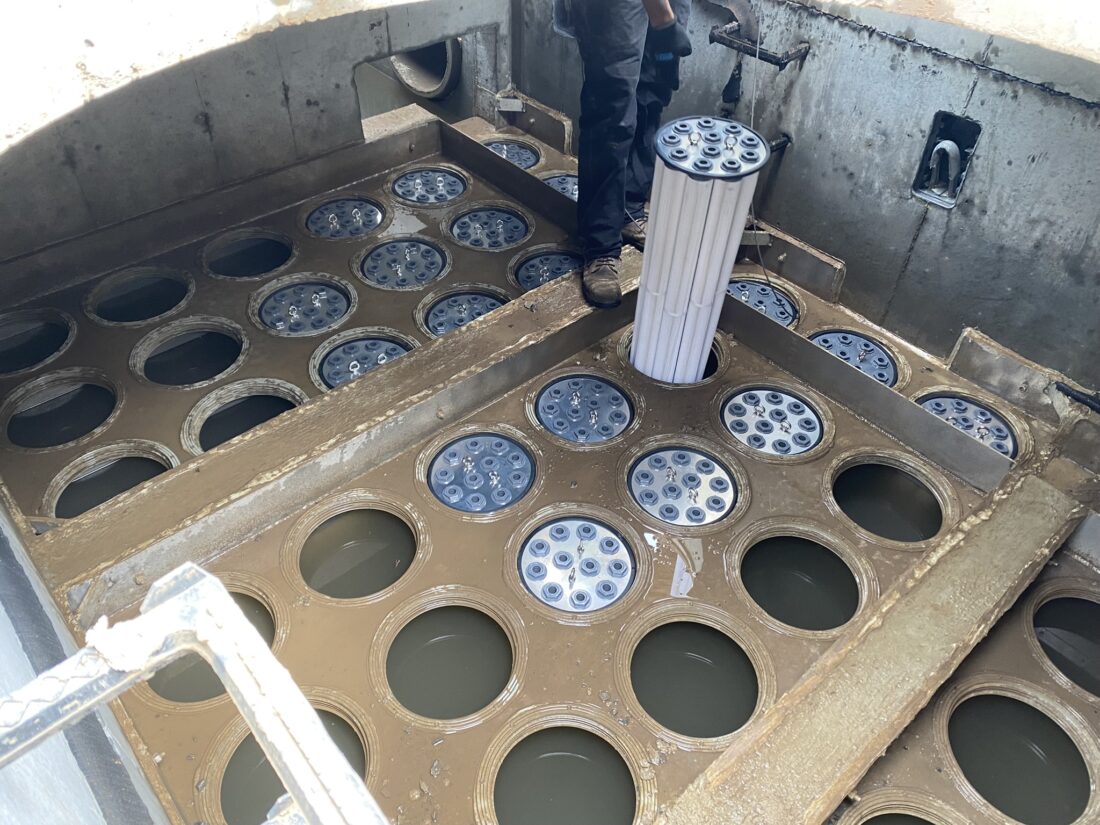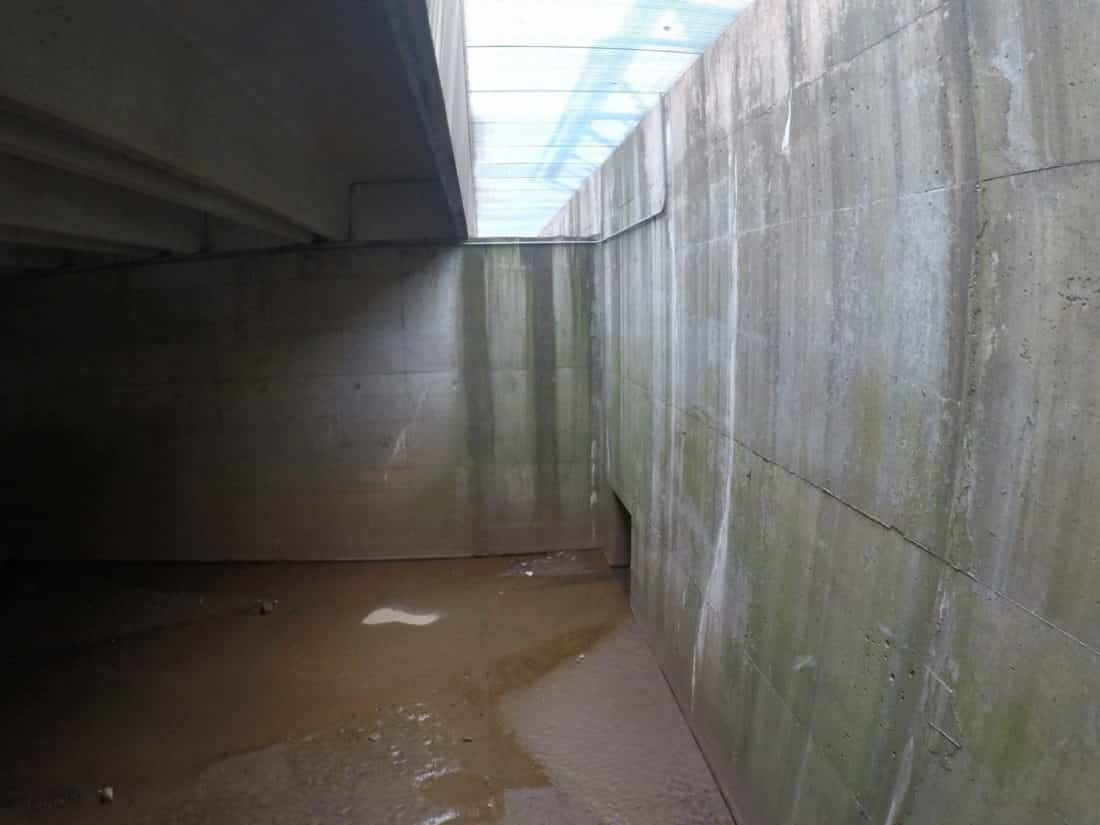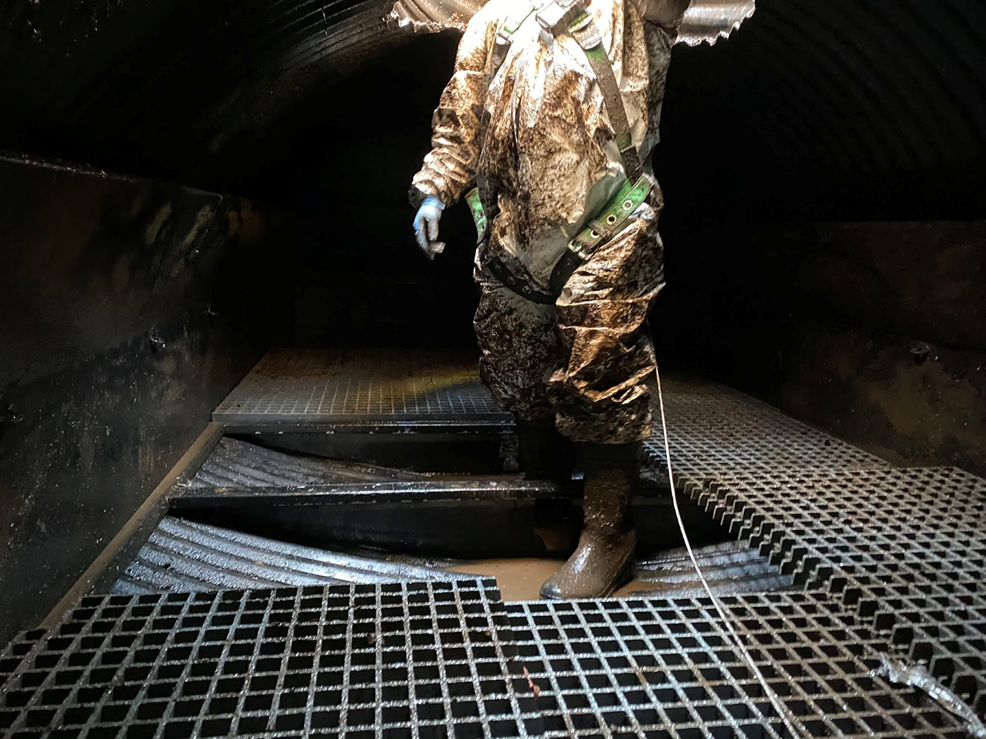
“Permit-Required Confined Space” Overview
Generally speaking, what is considered a “confined space” in the workplace? A confined space in the workplace refers to an area that is not designed for people to occupy but is large enough to perform work or maintenance in. These spaces are never designed for continuous occupancy and have restricted exits or entries and present some type of hazard to human occupants. There are many different confined spaces, and these can include manholes, tunnels, pipelines, tanks, silos, ductwork, shafts, and more.
The Occupational Safety and Health Administration (OSHA) uses the criteria below to describe a confined space: According to OSHA, a confined space is large enough for an employee to perform work, has restricted exits and entries, and isn’t designed for continuous occupancy. However, there are various confined spaces as designated by OSHA, as some confined spaces are more hazardous than others. Read on to learn more about the criteria for confined space, why a confined space is dangerous, and what OSHA considers a permit-required confined space.
OSHA Confined Space: What Makes a Confined Space Permit Required?
Whose responsibility is it to identify confined spaces and reduce hazards? An employer should always perform a job hazard analysis and must always be aware if their employees are entering any enclosed spaces, and every employer should know the OSHA confined space criteria. However, some confined spaces may pose more hazards than others if they meet further criteria, and these confined spaces require an issued permit to enter them. What is the difference between a confined space and a permit-required confined space?
A permit-required confined space will meet all the criteria for a confined space plus one or more of the following:
- Is a potentially hazardous atmosphere
- Contains a substance that can asphyxiate or engulf the entrant
- Has spaces with inwardly converging walls within the space or a floor that slopes downward, tapering to a small cross-section
- Contains any other serious health or safety hazard
- Potential for engulfment
If a workplace contains work in a confined space or has permit-required confined spaces, there should be a written program in place (permits) issued by the employer to those employees entering the space. Who issues a confined space entry permit? It comes from the employer but must meet OSHA’s standards and regulations. There should also be a rescue plan for confined spaces. What is an example of a permit-required confined space? A sewer or manhole is a good example.
Employer Responsibilities
It is the responsibility of the employer to identify any areas of the job site or workplace that may be permit-required confined spaces. If areas such as these are onsite, the employer must create a requirement for a Permit Required Confined Space Program. This written document shows how the employer will control any potential safety hazards within confined spaces and how they plan to protect employees. As part of this, the employer will also perform a hazard analysis, permitting plan, and rescue plan.
Hazard Analysis
When an employer performs a job hazard analysis (JHA), they will note every potential hazard in the defined work area and the confined space. They will also outline how to keep employees safe, such as with personal protective equipment (PPE), trip pods, or retrieval devices.
Permitting Plan
To enter a permit-required confined space, an employee must hold a Confined Space Entry Permit (details discussed later on). Generally, the permit ensures that the JHA has been performed, that the employee has all necessary precautions, such as PPE, and those job assignments within the confined space are clear. (There are different assignments and qualifications for authorized entrants, authorized attendants, and entry supervisors). Every participant that plays a role in the confined space entry will have a set of clearly defined job descriptions and responsibilities.
The permitting plans also outline what is required when a confined space job is completed. The entry permit is closed by the supervisor and then turned in to the safety department (EHS). Typically, entry permits are only valid per shift and must be renewed daily due to changing conditions in the workplace.
Rescue Plan
OSHA is very specific regarding the steps of a confined space rescue plan. What is an emergency arrangement in a confined space? It is paramount that every confined space entry plan has a rescue plan. However, OSHA has listed seven steps when it comes to your confined space rescue plan:
- Conduct rescue drills often.
- Designate rescues between emergency rescues and non-emergency rescues.
- Entrants entering confined spaces for rescues must wear full-body harnesses.
- Survey confined spaces for rescue.
- Survey openings for rescue.
- Talk with local authorities about rescue capabilities in the event of an emergency.
- Have a rescue team organized.
- 911 is not a rescue plan
All companies should have a confined space rescue team (CSRT) organized in case of emergency, and deployed when needed. During high risk events, a confined space rescue team will be called to the site in advance of any work and be ready to perform as needed . Confined space safety training is paramount for every company.
What Is on a Confined-space Permit?
What must the permit contain in a confined space that requires an entry permit? For an employee to be issued a permit for a permit-required confined space, they must have undergone training specific to the hazards of that particular confined space. Every individual permit-required confined space requires a different permit. Permits are only valid for one shift. According to OSHA, these permit types should contain 16 items:
- The space to be entered
- The purpose of entry
- The authorized duration and date of the entry permit
- The name(s) of authorized entrants in the permit space
- Means of identifying authorized entrants in the permit space (rostering, trackers, etc.)
- Name(s) of personnel serving as attendant(s) for the permit duration
- Name of the entry supervisor, along with the entry supervisor’s signature
- Known hazards in the permit space
- Measures used to isolate and eliminate hazards before entry (lockout, ventilation, flushing)
- List of acceptable entry conditions
- Results of initial and periodic tests that have been performed, with dates and initials of testers
- List of emergency response procedures and who to contact in the event of an emergency
- Communication procedures used by entrants, attendants, and supervisors
- List of provided equipment from the Confined Space Program (PPE, alarm systems, etc.)
- Any other information to maintain employee safety
- Other work permits required for the completion of the job
For a permit to be reissued for a new shift, atmospheric testing must be performed, the Environmental Health & Safety (EHS) department must verify all precautions are still in effect, and only original work approved on the permit is cleared in the confined space.
Want to learn more about when a confined space permit is required? Or are you interested in Stormwater BMP Inspection services? Contact one of our engineers to discuss your parking lot design and BMP choice at [email protected].




